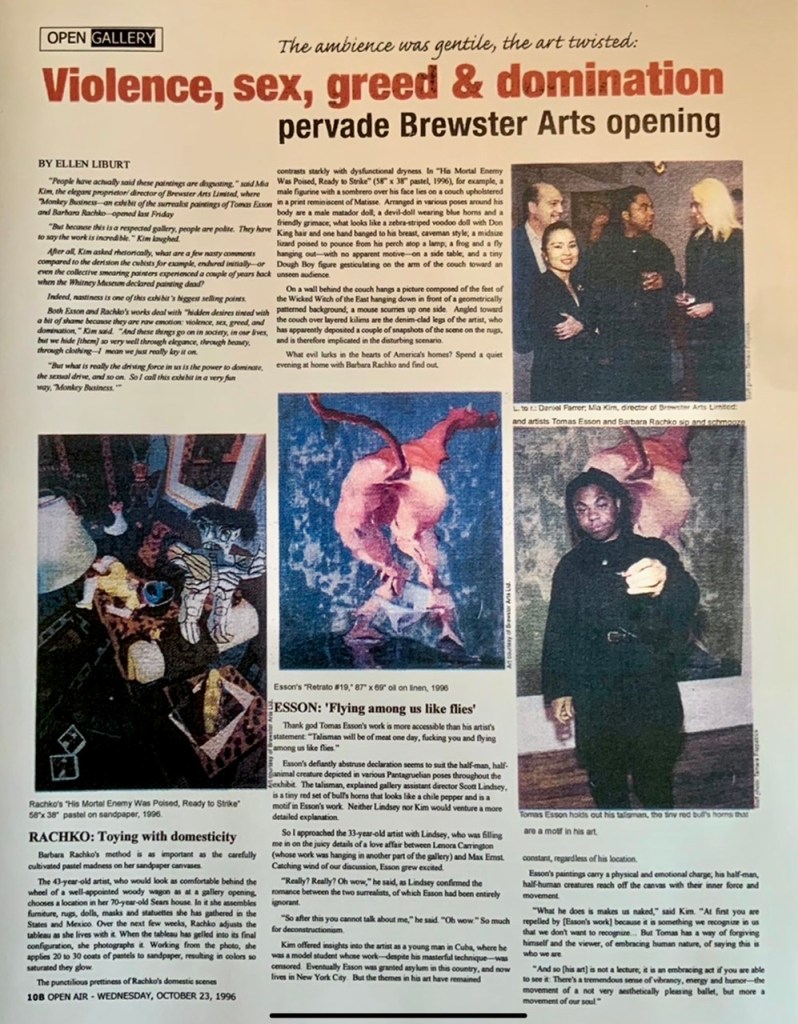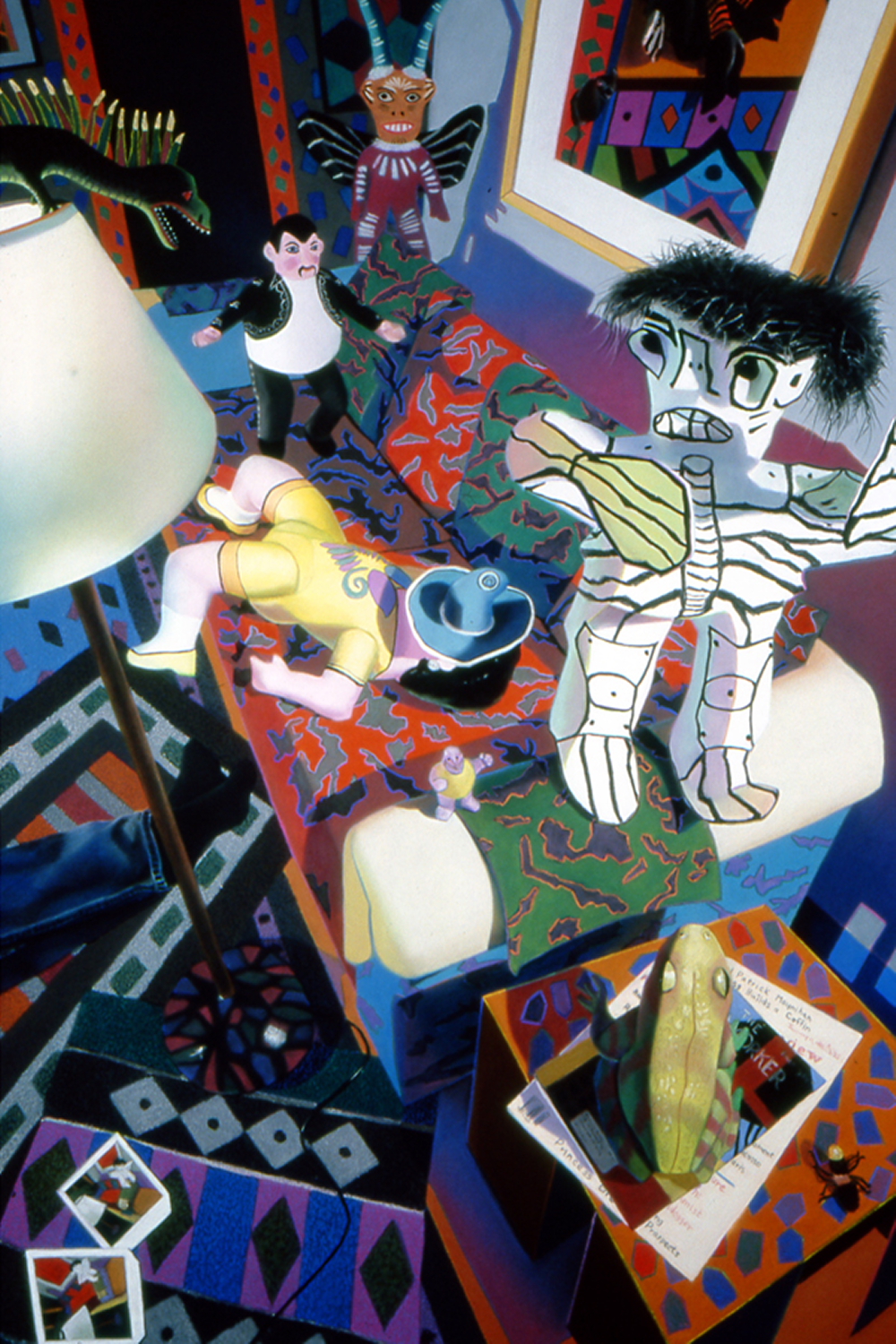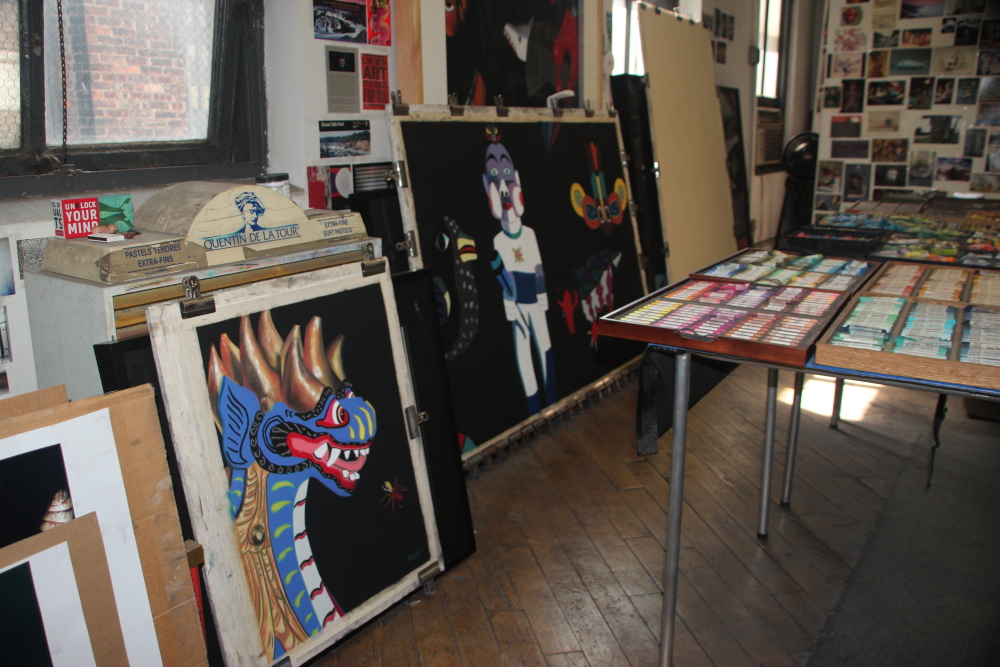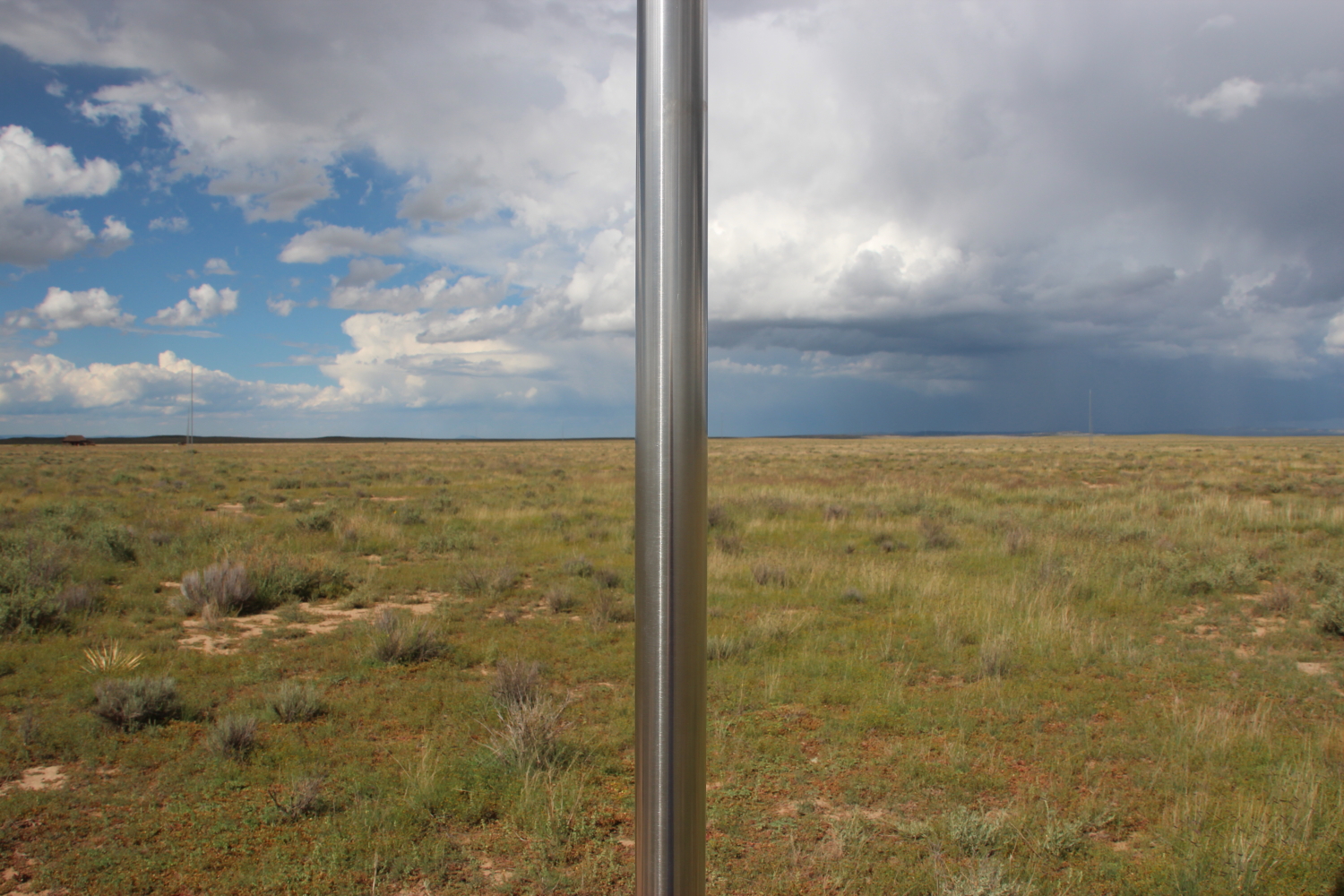Blog Archives
Travel photo of the month*
Posted by barbararachkoscoloreddust

*favorite travel photos that have not yet appeared in this blog
Jennifer Cox, Director, and I on the red carpet at the World Premier of “Barbara Rachko: True Grit” on Oct. 13, 2023 during the Newport Beach Film Festival!
Comments are welcome!
Posted in 2023, An Artist's Life, Travel
Comments Off on Travel photo of the month*
Tags: ”Barbara Rachko: True Grit”, director, during, Jennifer Cox, Newport Beach Film Festival, red carpet, World Premier
Q: What was the first New York gallery that represented your work and how did they find you?
Posted by barbararachkoscoloreddust

A: My first (and still the best) New York gallery was Brewster Gallery on West 57th Street in what, in 1996, was the most important gallery district in Manhattan. By joining Brewster, my work was exhibited alongside an impressive list of Latin American painters and sculptors such as Leonora Carrington, Frida Kahlo, Francisco Zuniga, Rufino Tamayo, Diego Rivera, Francisco Toledo, and more. Brewster was a prestigious and elegant gallery, well-known throughout the Latin American art world for their superb exhibitions and their contributions to art history scholarship.
Since I am not Latina, my work was selected by virtue of its Mexican subject matter and level of craftsmanship. Mia Kim, the owner/director, told me that amidst so many deserving, unrepresented, and talented artists of Latin American heritage, she was sometimes challenged to defend her decision to represent me. Mia’s response was always, “Barbara may not be of Latin American ancestry, but she most assuredly has the soul of a Latina! Her work has obvious affinities to Leonora’s, the other non-Latina that we represent.”
In July of 1996, while I was still living in Virginia, I mailed a slide sheet and reviews to Brewster, thinking that during the slow summer months, perhaps someone might actually LOOK at my material. Then I forgot all about it as Bryan and I headed off on a trip to Mexico. While we were in Mexico City, something told me to check our phone messages at the house in Alexandria. I did so and was floored to hear Mia offer me representation and a two-person show in October. The first time she would even see my work in person would be when I delivered it to the gallery!
In October my “Domestic Threats” pastel paintings were paired with work by Cuban artist, Tomas Esson, for an exhibition called “Monkey Business.” The opening was extremely well-attended by a sophisticated international New York crowd. A highlight was meeting Leonora Carrington, one of my artist heroes of long standing. Afterwards a large group of us were wined and dined at a French restaurant around the corner on West 58th Street. I remember looking at Bryan and saying, “I think I’ve made it!” The next day there was a favorable review in a publication called, “Open Air.” After working in complete obscurity for thirteen years, I was finally on my way.
Comments are welcome!
Posted in 2021, Alexandria (VA), An Artist's Life, Art Business, Exhibitions, New York, NY
Comments Off on Q: What was the first New York gallery that represented your work and how did they find you?
Tags: "I think I've made it!", "Monkey Business", "the soul of a Latina", 58th Street, actually, affinities, afterwards, Alexandria, always, ancestry, around, art history, art world, artist, assuredly, Brewster Fine Arts, Brewster Gallery, called, challenged, complete, contributions, craftsmanship, Cuban, decision, defend, deserving, Diego Rivera, director, district, Domestic Threats, during, elegant, exhibited, exhibitins, exhibition, extremely, favorable, floored, forgot, Francisco Zuniga, Frida Kahlo, gallery, headed, heritage, heroes, highlight, impressive, in person, international, joining, Latin American, Latina, Leonora, Leonora Carrington, living, long-standing, looking, Manhattan, material, meeting, Mexico City, Mia Kim, New York, non-Latina, obscurity, obvious, open air, opening, owner, painters, pastel paintings, perhaps, phone messages, prestigious, publication, remember, represent, representation, represented, response, restaurant, review, Rufino Tamayo, saying, scholarship, sculptors, selected, slide sheet, someone, something, sometimes, sophisticated, subject matter, summer, superb, talented, thinking, Tomas Esson, two-person show, unrepresented, Virginia, virtue, well-attended, well-known, working
Pearls from artists* # 469
Posted by barbararachkoscoloreddust

*an ongoing series of quotations – mostly from artists, to artists – that offers wisdom, inspiration, and advice for the sometimes lonely road we are on.
I feel artists are at the cutting edge of everything created by humans in our society. I would love for artists, young and old, to remember that for the Art World to exist, the first thing that is necessary is art. No gallerist, museum director, preparatory, or museum guard would have a job without an artwork having been created.
Without remembering this, artists can lose sight of their power and worth. We begin to believe that the Art World came first and that we need to change, appropriate, adjust, or edit ourselves and our work to fit into this world. This does not need to happen, and should not happen.
Stephanie Diamond, artist, New York, NY, in Art/Work: Everything You Need to Know (And Do) As You Pursue Your Art Career by Heather Darcy Bhandari and Jonathan Melber
Comments are welcome!
Posted in 2021, An Artist's Life, Art Business, Art in general, Inspiration, Pearls from Artists, Quotes
Tags: adjust, appropriate, art world, artists, artwork, believe, created, cutting edge, director, everything, gallerist, happen, Heather Darcy Bhandari, humans, Jonathan Melber, museum, necessary, ourselves, preparator, remember, society
Q: You have worked with twenty-plus galleries during your career. Which ones do you consider the best?
Posted by barbararachkoscoloreddust

“Myth Meets Dream,” 1993, soft pastel on sandpaper, the earliest painting that includes Mexican figures
A: Probably the most prestigious gallery that represented my work was Brewster Fine Arts on West 57th Street in Manhattan. Brewster was my first New York gallery. In the summer of 1996 I mailed the gallery a sheet of slides, as we did in those days. I was living in Virginia and had been a working artist for ten years. In July while traveling around Mexico, I decided to check the phone messages at home in Virginia. I was thrilled to receive an invitation from Mia Kim, the gallery director, to exhibit pastel paintings in October! And she had not yet even seen my work in person.
Beginning that fall, I gained representation with Brewster Fine Arts, an elegant gallery specializing in Latin American Masters like Rufino Tamayo, Diego Rivera, and others. I am not Latina, of course, but I showed there due to my subject matter. At my October opening, I remember Mia declaring to the attendees, “Barbara has the soul of a Latina!” That night I met fellow gallery artist Leonora Carrington. She and I were the only non-Latina artists respresented. I knew I was on my way!
The gallery continued to present my work in group exhibitions and the staff gave brilliant talks about me and my creative process. For many years whenever I introduced myself to a new art aficionado, they already knew my work from having seen it at Brewster. I continued to be represented there until the gallery closed years later.
Also, Gallery Bergelli in Larkspur, CA did an excellent job of representing my work. I applied for one of their juried exhibitions, was accepted, and afterwards, they offered permanent representation. Soon they introduced me to one of my best collectors, with whom I am still friends.
I have worked with many galleries, some good, some not, for various reasons. Ours is an extremely tough business. Unfortunately, many of the best and formerly-great galleries are gone forever.
Comments are welcome!
Posted in 2020, An Artist's Life, Art Business, Domestic Threats, Mexico, New York, NY, Pastel Painting
Tags: "Barbara has the soul of a Latina!", "Myth Meets Dream", a tough business, accepted, aficionado, afterwards, applied, artist, attendees, beginning, Brewster Fine Arts, brilliant, California, collectors, consider, continued, decided, declaring, Diego Rivera, director, elegant, excellent, exhibit, formerly-great, friends, galleries, Gallery Bergelli, introduced, invitation, juried exhibitions, Larkspur, Latin American Masters, Latina, Leonora Carrington, living, Mexico, Mia Kim, myself, New York, non-Latina, offered, opening, pastel paintings, permanent, prestigoius, receive, remember, represented, Rufino Tamayo, soft pastel on sandpaper, specializing, subject matter, summer, traveling, various, Virginia, West 57th Street, working
Q: As you reflect on your overall art career beginning with your art education, what major event stands out as an important sign that you were headed in the right direction?
Posted by barbararachkoscoloreddust
A: In 1989 I left a career in the Navy to pursue life as a full-time professional artist. In July 1996 Bryan and I were traveling in Mexico. Something told me to check the phone messages at our Virginia house so I did.
There was a message from Mia Kim, the director of Brewster Arts Ltd. on West 57th Street in Manhattan, requesting a dozen large pastel paintings for a two-person exhibition in October, just three months away!
At the time I was still living in Alexandria, Virginia so exhibiting in Manhattan – let alone securing prestigious gallery representation – seemed a far-off dream. Yes, I had sent Mia slides, but she had not seen my work in person. She first saw my “Domestic Threats” pastel paintings when I delivered them to the gallery for exhibition. The show was called “Monkey Business.”
Brewster Arts was an elegant New York gallery that specialized in Latin American Art. There was just one other non-Latina artist that Mia represented, Leonora Carrington, whom I met that October at my opening. I remember Mia introducing me and declaring to the entire crowd, “Barbara has the SOUL of a Latina.” I’ve always loved that. It was the first time I realized I was really on my way!
Brewster Arts Ltd. continued to represent my work until the gallery closed some years later.
Comments are welcome!
Posted in 2019, An Artist's Life, Art Business, Domestic Threats, Mexico, New York, NY, Pastel Painting
Comments Off on Q: As you reflect on your overall art career beginning with your art education, what major event stands out as an important sign that you were headed in the right direction?
Tags: artist, “His Mortal Enemy Was Poised Read to Strike”, beginning, Brewster Arts Ltd., continued, declaring, delivered, director, Domestic Threats, education, elegant, exhibitingliving, exhibition, far-off, full-time, gallery, house, important, in person, Latin American, Latina, Leonora Carrington, major event, Manhattan, Mexico, Mia Kim, Navy, New York, October, opening, overall art career, pastel paintings, phone messages, prestigious, professional, realized, reflect, remember, represent, representation, right direction, securing, Virginia, West 57th Street
Pearls from artists* # 206
Posted by barbararachkoscoloreddust
* an ongoing series of quotations – mostly from artists, to artists – that offers wisdom, inspiration, and advice for the sometimes lonely road we are on.
And a career in higher education and medicine has taught me that creativity – whether in the sciences, arts or humanities – fosters controversy. We neither seek nor avoid controversy – we anticipate it and welcome the opportunity to explain the creative choices we make. We must take risks. We must be involved in the vital issues facing the world.
David J. Skorton, Director of the Smithsonian Institution in “What Do We Value?” Museum, May/June 2016
Comments are welcome!
Posted in 2016, Art in general, Black Paintings, Inspiration, Pastel Painting, Pearls from Artists, Photography, Quotes
Comments Off on Pearls from artists* # 206
Tags: "Provocateur", "What Do We Value?", anticipate, career, choices, controversy, creative, creativity, David J. Skorton, director, education, explain, facing, fosters, higher, humanities, involved, issues, medicine, museum, neither, opportunity, pastel, sandpaper, sciences, Smithsonian Institution, taught, welcome, whether
Pearls from artists* # 204
Posted by barbararachkoscoloreddust
* an ongoing series of quotations – mostly from artists, to artists – that offers wisdom, inspiration, and advice for the sometimes lonely road we are on.
It has been said that science helps us understand what we can do; the arts and humanities – our culture and values – help us decide what to do. Studying the arts and humanities develops critical-thinking skills and nimble habits of mind, provides historical and cultural perspective and fosters the ability to analyze, synthesize and communicate.
As author Daniel Pink observed, “The last few decades have belonged to a certain kind of person with a certain kind of mind – computer programmers who could crank code, lawyers who could craft contracts, MBAs who could crunch numbers… The future belongs to a very different kind of mind – creators and empathizers, pattern recognizers and meaning makers. These people – artists, inventors, designers, storytellers, caregivers, consolers, big-picture thinkers – will now reap society’s richest rewards and share its greatest joys.”
David J. Skorton, Director of the Smithsonian Institution in “What Do We Value?” Museum, May/June 2016
Comments are welcome!
Posted in 2016, An Artist's Life, Art in general, Art Works in Progress, Black Paintings, Creative Process, Inspiration, New York, NY, Pearls from Artists, Photography, Quotes, Studio, Working methods
Comments Off on Pearls from artists* # 204
Tags: "What Do We Value?", ability, analyze, artists, author, belonged.certain, belongs, big-picture, caregivers, communicate, computer, consolers, contracts, creators, critical, crunch, cultural, culture, Daniel Pink, David J. Skorton, decades, decide, designers, different, director, empathizers, fosters, future, greatest, habits, historical, humanities, inventors, lawyers, makers, meaning, museum, nimble, numbers, observed, pattern, people, perspective, programmer, progress, provides, recognizers, rewards, richeest, science, skills, Smithsonian Institution, society, storytellers, Studio, studyingdevelops, synthesize, thinkers, thinking, understand, values
Q: What’s the point of all of this? Shouldn’t we be discussing how to end poverty or promote world peace? What can art do?
Posted by barbararachkoscoloreddust
A: I happen to recently have read an inspiring book by Anne Bogart, the theater director. It’s called, “and then you act: making art in an unpredictable world” and she talks about such issues. I’ll quote her wise words below:
“Rather than the experience of life as a shard, art can unite and connect the strands of the universe. When you are in touch with art, borders vanish and the world opens up. Art can expand the definition of what it means to be human. So if we agree to hold ourselves to higher standards and make more rigorous demands on ourselves, then we can say in our work, ‘We have asked ourselves these questions and we are trying to answer them, and that effort earns us the right to ask you, the audience, to face these issues, too.’ Art demands action from the midst of the living and makes a space where growth can happen.
One day, particularly discouraged about the global environment, I asked my friend the playwright Charles L. Mee, Jr., ‘How are we supposed to function in these difficult times? How can we contribute anything useful in this climate?’ ‘Well,’ he answered, ‘You have a choice of two possible directions. Either you convince yourself that these are terrible times and things will never get better and so you decide to give up, or, you choose to believe that there will be a better time in the future. If that is the case, your job in these dark political and social times is to gather together everything you value and become a transport bridge. Pack up what you cherish and carry it on your back to the future.'”
“… In the United States, we are the targets of mass distraction. We are the objects of constant flattery and manufactured desire. I believe that the only possible resistance to a culture of banality is quality. To me, the world often feels unjust, vicious, and even unbearable. And yet, I know that my development as a person is directly proportional to my capacity for discomfort. I see pain, destructive behavior and blindness of the political sphere. I watch wars declared, social injustices that inhabit the streets of my hometown, and a planet in danger of pollution and genocide. I have to do something. My chosen field of action is the theater.”
Comments are welcome!
Posted in 2014, An Artist's Life, Art in general, Creative Process, Inspiration, Pearls from Artists, Photography, Quotes
Tags: "and then you act: making art in an unpredictable world", action, agree, Anne Bogart, answer, anything, art, asked, audience, banality, become, behavior, believe, better, blindness, book, borders, bridge, capacity, carry, case, Charles L. Mee Jr., cherish, choice, choose, chosen, climate, connect, constant, contribute, convince, culture, danger, dark, decide, declared, defnition, demands, desire, destraction, destructive, development, difficult, directions, directly, director, discomfort, discouraged, discussing, effort, environment, everything, expand, experience, face, field, flattery, friend, function, future, gather, genocide, global, grpwth, happen, higher, hold, hometown, human, inhabit, injustices, inspiring, issues, know, life, Lightning Field, living, manufactured, mass, means, midst, objects, ourselves, pain, particularly, peace, person, planet, playwright, point, political, pollution, possible, poverty, proportional, quality, Quemado NM, questions, quote, read, resistance, right, rigorous, shard, social, space, sphere, standards, strands, streets, talks, targets, terrible, theater, time, times, together, touch, transport, trying, unbearable, unite, United States, universe, unjust, useful, value, vanish, vicious, wars, watch, wise, words, world, yourself
Q: If your “actors” could talk, what might they say about you as a director?
Posted by barbararachkoscoloreddust
A: I hope they would say that I am very focused, devoted to doing the best work possible, that I know exactly what I am after, and that I use all the skills and knowledge I have acquired over many years as a painter and a photographer to make art that is worthwhile and meaningful.
Posted in 2012, An Artist's Life, Art in general, Creative Process, Domestic Threats, Inspiration, Pastel Painting, Photography
Comments Off on Q: If your “actors” could talk, what might they say about you as a director?
Tags: "He Was So in Need of Botany", actors, director, painter, photographer





